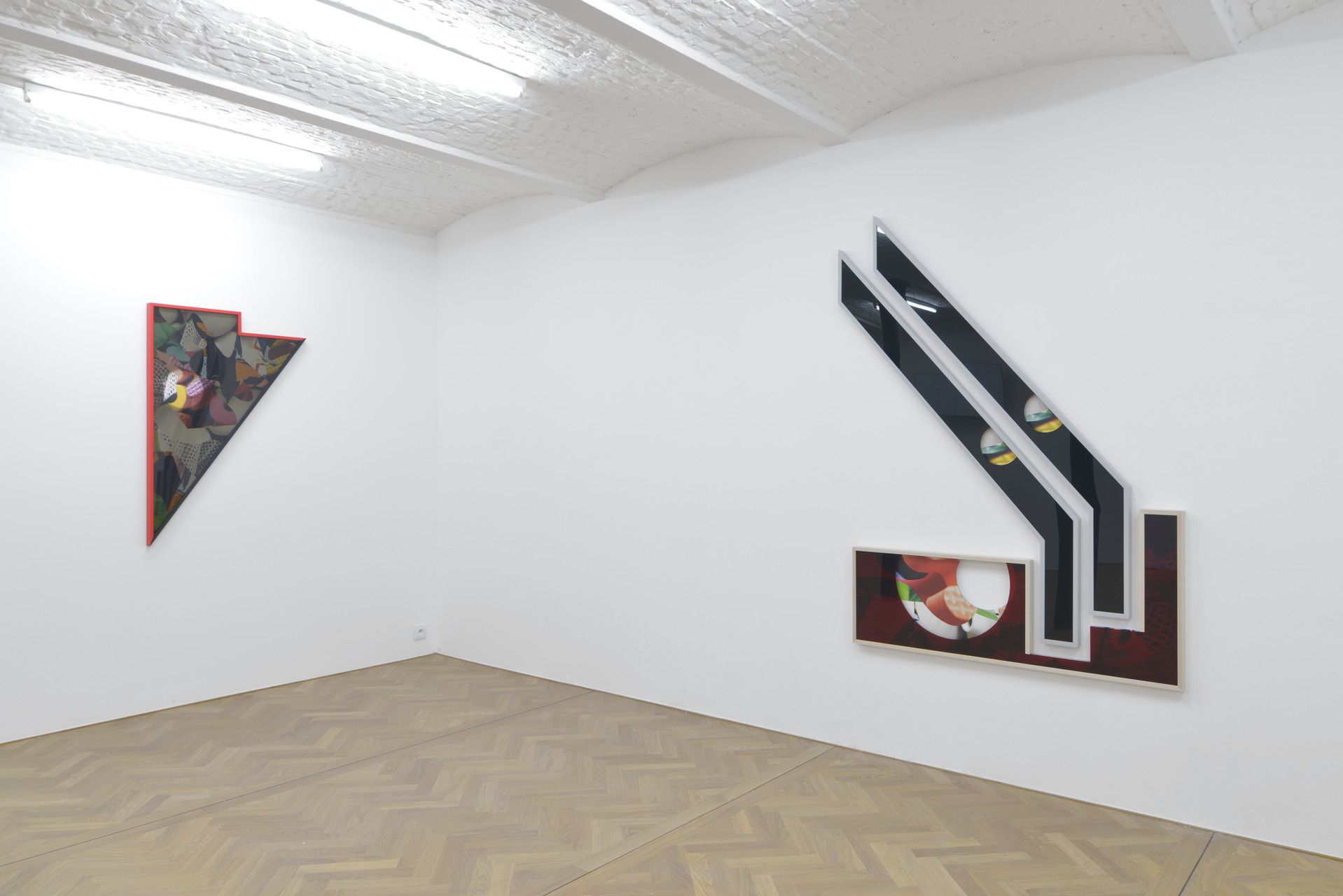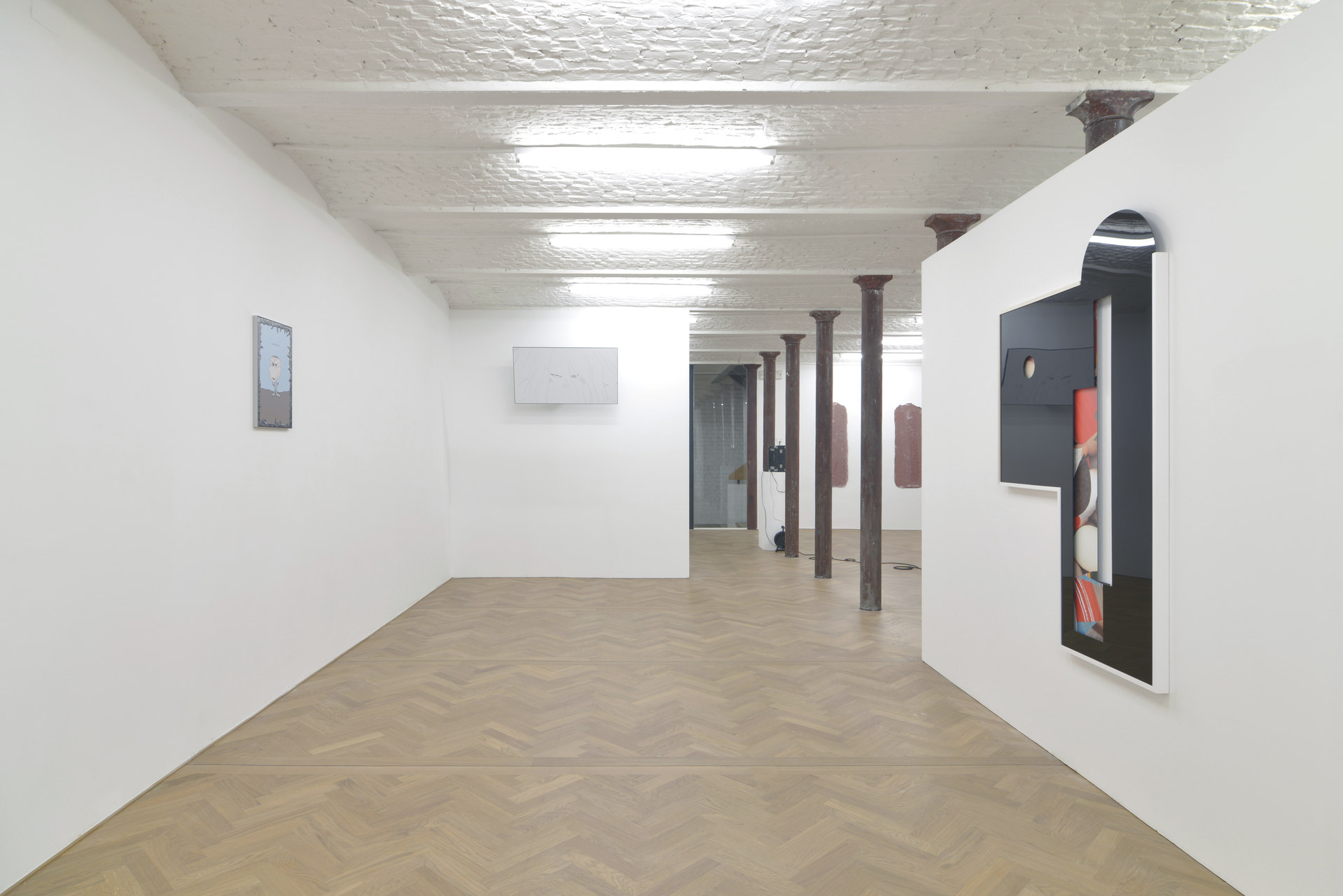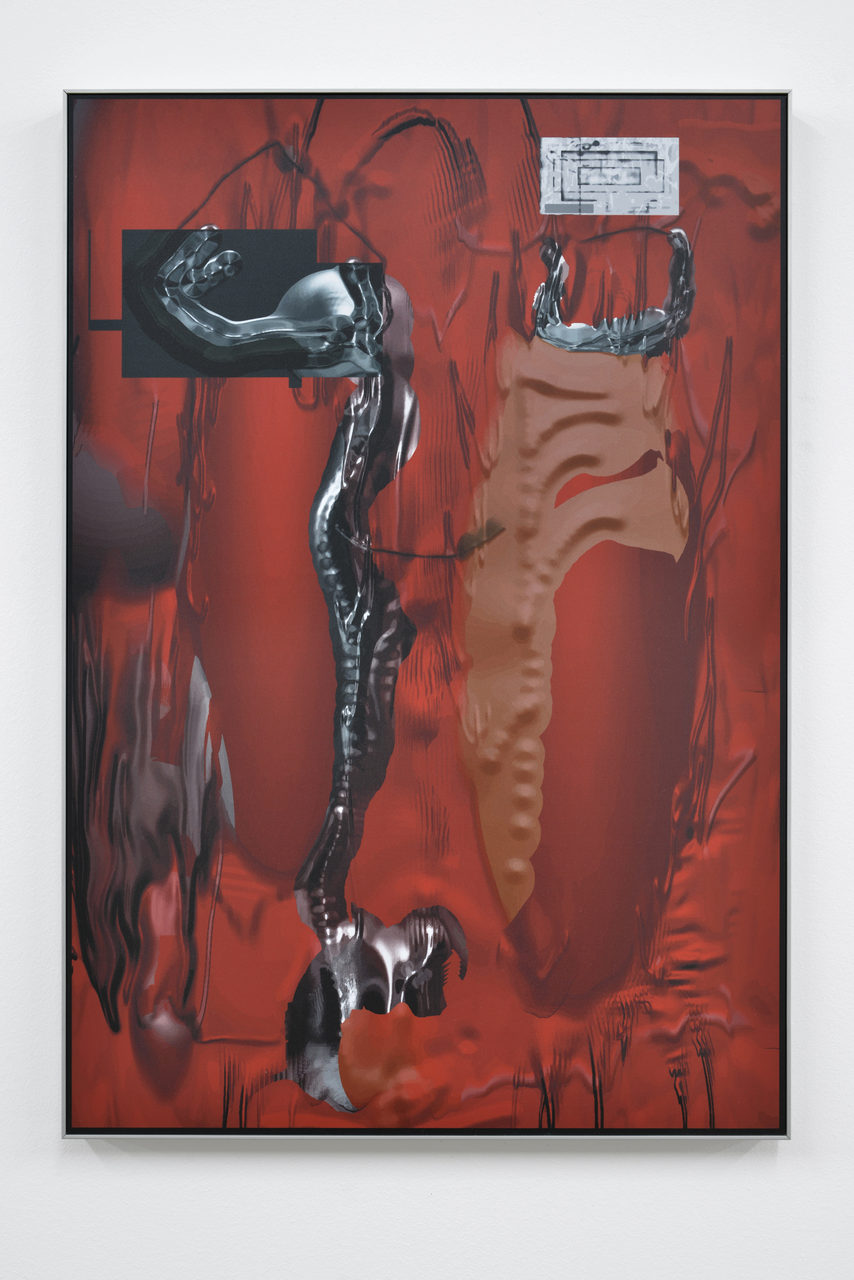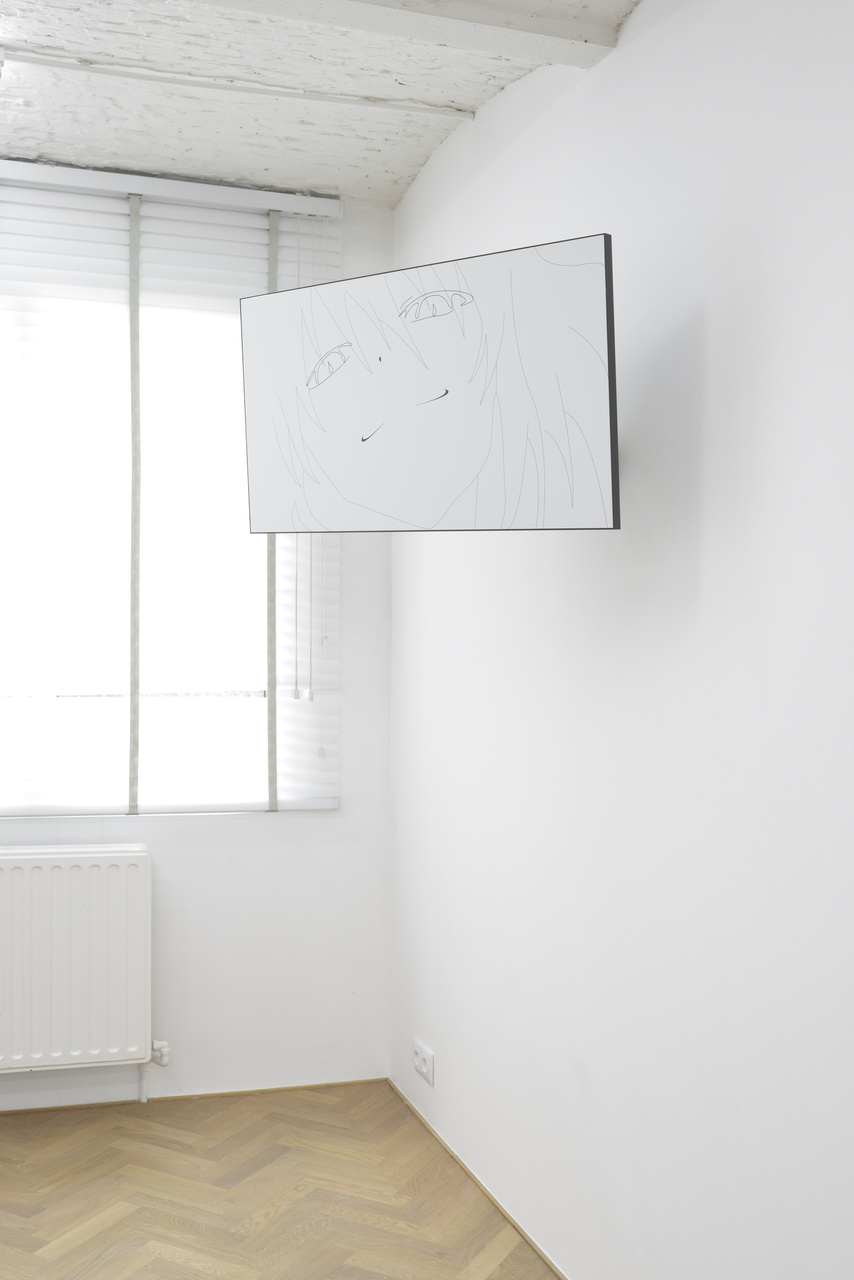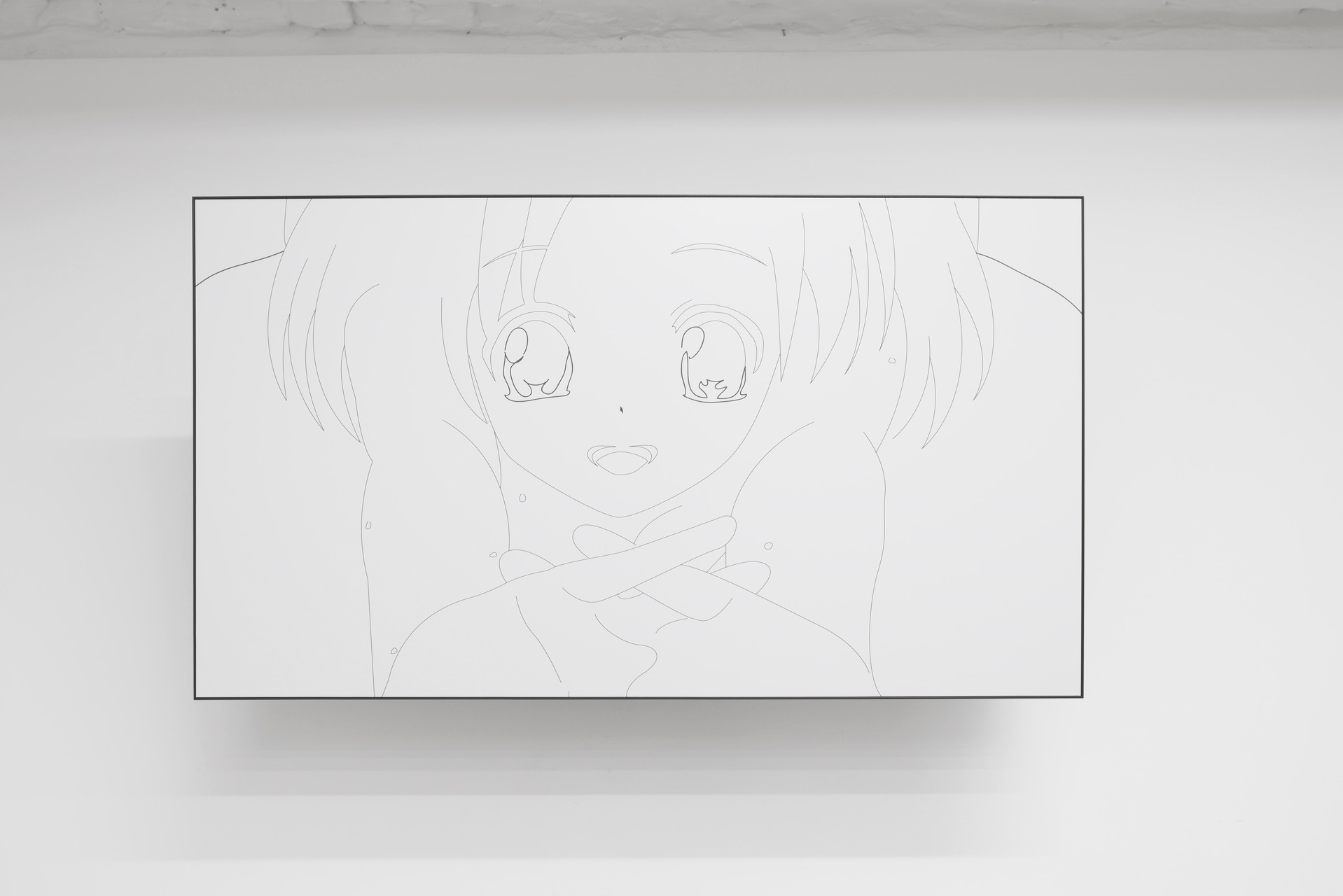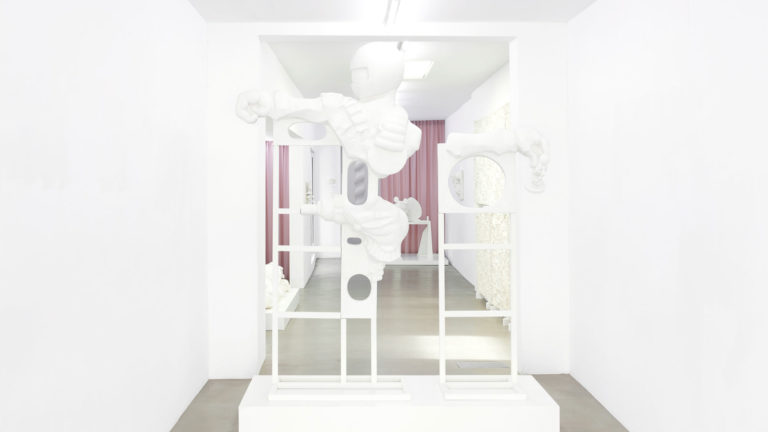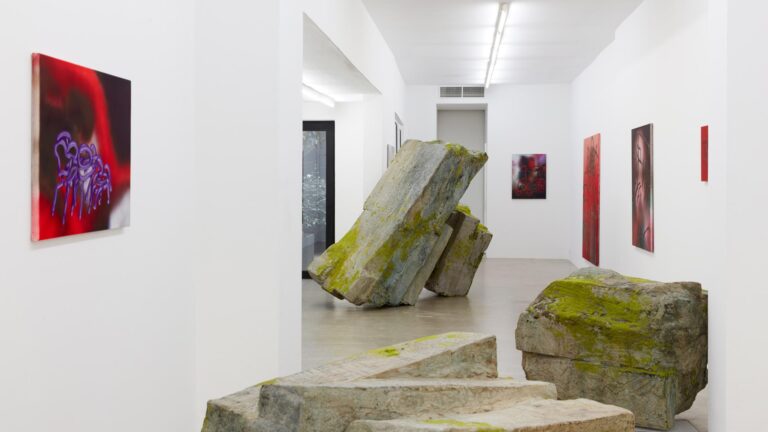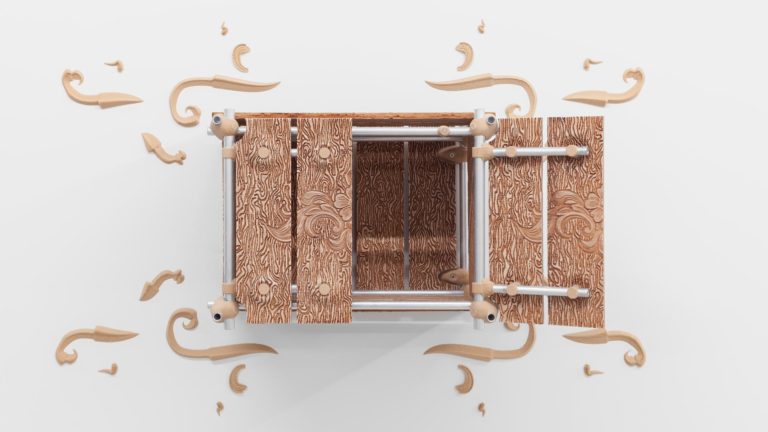Artists: Kate Steciw and Yannick Val Gesto
Exhibition title: Soul Hackers
Venue: LEVY.DELVAL, Brussels, Belgium
Date: March 19 – April 18, 2015
Photography: Images courtesy of the artists and LEVY.DELVAL
DeviantArt: a community website for artists. It was founded in 2000, which means that it pre-existed Facebook, Youtube or even Myspace. It’s the largest online art gallery.As of March 2013, the site consisted of over 25 million members, and over 246 million submissions, and received around 140,000 submissions per day. DeviantArt was originally used to connect people who were «deviating» softwares and applications from their original design. Artists are called «deviants». Submitted artworks are called «deviations». DeviantArt aesthetic is now often as- sociated to fan art, internet memes, gaming culture and various sub-cultures.
In 2014, in collaboration with Benny Van den Meulengracht-Vrancx, Yannick Val Gesto published a book tilted «Deviant». In the past I’ve mostly been using found images to recreate the infantile and honest atmosphere of the type of fan art and meme-imagery you find on certain images boards and forums.But I’m not interested in the references per se;but it’s the sheer originality of that underdog aesthetic that fascinates me.In terms of figures,the amateur on- line practices outnumber without doubt the professional high art production. But Yannick Val Gesto stresses upon the fact that it shouldn’t be considered as the overwhelming waste of the internet. These weird scribbles and collages people are putting online show value I don’t see elsewhere (…) It’s very specific.
As individuals we cannot deny the digitalization of our visual language,culture and identity.(…) Whether it be related to human emotions, cyberculture, or a combination of the two,all of my work revolves around the physical manifestation of the digital.
This often results in compositions drenched with information and an unconventional feeling of aesthetics, at some times shiny, at some times dirty. For Soul Hackers/Petrified series he did quite the opposite as well, stripping close-up images of some of his favorite anime characters, until only black outlines remained on a white, empty background, removing the outspoken anime characteristic.The characters become anonymous, idle and gender- less, without losing the original attractive power of the screen-capped image.Through a more subtle and universal language, these works transcend their source material, beyond the niche.
ShutterStock: pioneer of the subscription based microstock photography business model. Microstock photogra- phy is a branch of the stock photography industry that operates only online.
In comparison to traditional stock photography agencies, it implies that they operate with a wider range of photographers, including amateurs. The images are sold at at very low rate and are royalty free. ShutterStock debuted with 30.000 royalty-free stock photographs credited to its founder Jon Oringer, but the database quickly evolved and was estimated at 18 millions images in 2012.Although stock photographs agencies exist since 1930, they were offering only outtakes from professional shootings until 1980 when some photographers started to specialized in that field.It became also very popular among amateur photographs.
Kate Steciw is using stock photographs from ShutterStock in her practice since 2010. I started working with stock about 5 years ago.When working as a retoucher, I realized that it wasn’t a camera or the act of photographing per se that I was interested in. I was more interested in the tools, aesthetics and actions of retouching; the fact that there was all of this creative labor being performed on images authored by someone else yet the aesthetic traces of that labor were supposed to be invisible to the end viewer.I really wanted to see if there was an expressionistic potential in these actions;a way of making these gestures the end point of a work rather than a hidden addendum to a traditional photographic work. More simply, I wanted to see if these tools could be used to evoke an emotional response in the same way as traditional media.
From there,I also became fascinated with the form of what I call a «layer based» practice.So much art now is actually generated from a file that has at least a few layers (Photoshop, Illustrator, Painting programs, even sound and video editing software) and that’s really new.These layers,in most cases can be altered separately from the entire piece and that is really exciting to me.Within one layered file,multiple artworks can be generated by either changing layer order or altering discrete layers individually from the rest of the work.
As for stock photography,it was a nice continuation of current discussions around appropriation and authorship.These images are provisionally «authorless».All of the images I use are licensed legally and that is a different practice than appropriation entirely yet,at the same time,it’s incredibly contemporary in the sense that we have moved far beyond a free web and into a new really defined by licensed content creation so, using licensed content seems really relevant to me right now.








